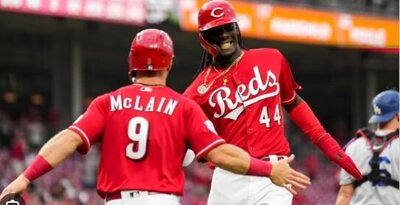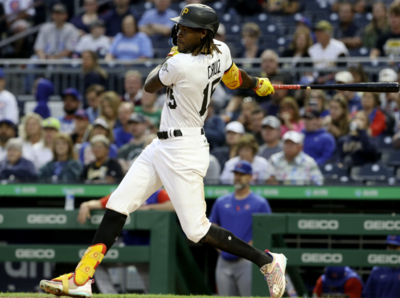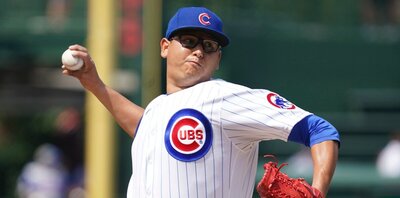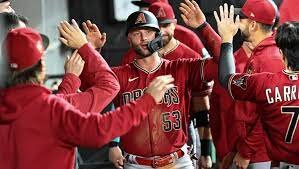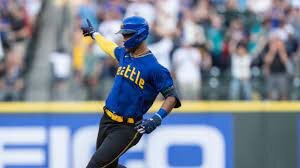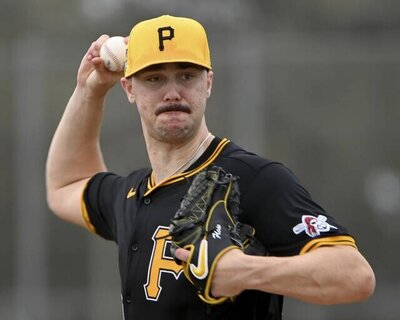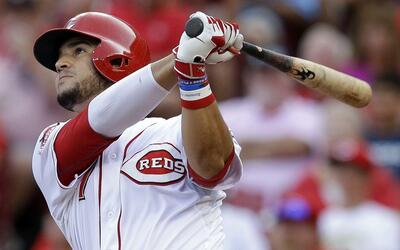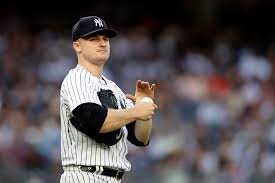Ian Kinsler- The Tigers and fantasy owners both have to be pretty happy with the production Ian Kinsler has brought to their squads through the first 59 games of the season. Kinsler has shown increased value from a disappointing 2013 season, but he is also showing obvious signs of aging. Kinsler is showing a bit more pop thanks in large part to a return to his career tendency towards hitting more than 40% fly balls. His 43.3% Fly Ball Rate is supported by his career tendencies. Kinsler remains a 15 or so stolen base threat so his returned power production and place atop the Tigers solid lineup are both excellent for his short term fantasy value. In the long term, he has some indicators of erosion of his skill set. Several stats paint this picture. Kinsler's HR/FB rate has regressed for the third year running and is currently at the lowest point of his professional career. While a switch in home ball parks from Texas to Detroit could explain this downward shift in HR/FB rate, it is not the only issue. Kinsler is also chasing a lot more pitches out of the zone than ever before. His O-Swing Rate is 31.8% compared to a career average of 23%. This change in swing tendency tends to indicate an aging player having to "cheat" more on fastballs and getting caught swinging at pitches outside of the zone. This rate hasn't affected Kinsler's K Rate yet as he has managed his normal strong contact rates, but it probably explains a couple issues. It can explain his paltry 3.7% BB Rate as he is not recognizing pitches outside of the zone and laying off them as well as in the past. Additionally, it may help explain a drop in Line Drive Rate to a three year low of 18%. Of course that Line Drive Rate is not so dissimilar to his career totals so it might just be normal deviation. Overall, Kinsler has been an excellent short term asset and should continue to be for the remainder of this season. After that, I think we are starting to see the signs of aging that may make his value less special in keeper and dynasty formats in the coming seasons.
Brian McCann- Brian McCann might make for a nice buy low candidate at this point of the season. McCann's statistics all seem to indicate at least some positive regression in his performance is on tap moving forward. While is batting average is unlikely to ever touch the .256 he saw in 2013, his current .225 average seems depressed slightly by a .232 BABIP. He does have the 2012 sample of a .234 season long BABIP to indicate that this might not be the case, but in 2012, McCann was hitting 3.5% fewer line drives and 6.2% more ground balls so using that sample as an indicator is probably seeking confirmation bias that his skills have eroded. I would say we will see probably a 10-15 point jump in average over the course of the next several months for McCann, which should at least make him a respectable play in batting average on a week to week basis. We should also expect a bit of a rebound in his power. His contact rates are almost identical to his 2013 season, but his HR/FB rate is 6.8% lower than last year and the lowest it has been since his rookie season in 2005. Given that Yankee Stadium is a fairly decent fit for his swing, it is unlikely that this HR/FB rate is sustained for the coming four months. The dream of McCann driving 30 home runs out of Yankee Stadium is probably long dead (if it was ever really alive), but there is still a reasonable expectation of another 14-15 home runs in McCann's bat as the season moves along. Overall, in a catching market with several top players either slated for a negative regression or sharing time in a platoon, it may make sense to see if you buy McCann cheap from a frustrated owner.
Melky Cabrera- Back at the end of April, I discussed Melky Cabrera's hot streak and whether his BABIP-induced success would be sustainable. Through 64 games, it has managed to be enough to keep Melky as a valuable third or fourth outfielder in fantasy formats, but the regression discussed in that piece has come on as we have moved into the summer months. After hitting 5 home runs in April, he has managed only another 5 home runs since. As his BABIP has regressed towards the .320-.330 range (currently sitting at .323), his average has also begun the slow descent towards a more realistic end number. Overall, Cabrera is showing similar enough plate patience statistics and more power to his 2011 campaign with the Royals. He won't have as much fantasy value as that season as he will probably only hit a couple more home runs this season and will steal half or less than half of his 2011 total (20). With all that being said, we are still looking at a player that will flirt with 20 home runs and 10 steals while scoring 85+ runs and hitting around somewhere around .300. Given his pre-season valuations, owners have to be wildly pleased with that sort of production. The point where "selling high" on Cabrera has probably come and gone, but if you didn't manage to sell him during his electric first month, you still have a reasonable enough third/fourth outfielder for a playoff run.
Alex Rios- Alex Rios' early season success has gone a bit unheralded. As the saying goes, "Chicks (and fantasy owners) dig the long ball", and Rios has not been hitting home runs. In fact, his 4.5% HR/FB Rate is the worst of his career since his 2004 rookie campaign with the Blue Jays where he managed just 1 home run through 460 plate appearances. The good news is that Rios has been winning owner's batting average (.335) and helping them win steals (12) while others can do the work with the big fly. The bad news is that the spectacular batting average probably isn't sustainable over the next four or so months. Rios' current BABIP is a career high .394, which is 82 points higher than his career average and 58 points higher than his next best season. While some increase in BABIP is expected with a 2.4% jump in Line Drive Rate, it certainly would not support this kind of single's average over the course of the season. There should be an expectation that Rios' average will dip considerably (think 30-40 points) over the course of the next several months. The good news is that as long as he keeps running at his current pace owners are looking at 25+ stolen bases from Rios on the season. With that being said, it may be time to start shopping Rios before his BABIP regression comes back to haunt you. His value may not get any higher than it is right now with a .335 batting average and 12 steals. If you can find an owner willing to pay you as if Rios will end the season as a top 10-15 outfielder, you should probably make the move as he is more likely to finish as a top 25-30 outfielder once the regression sets in.
Albert Pujols- The stories throughout April were almost universally positive about Albert Pujols. The games most feared right handed hitter had returned with a vengeance. Sadly, since the conclusion of April, Albert has not been able to continue his torrid pace, and his contact rates paint an ugly picture of the season moving forward. Albert has had a difficult time connecting with any authority as the season has moved along. His 16% Line Drive Rate would be his lowest total since 2009 and his 45% Ground Ball Rate would be the highest of his career (albeit only slightly higher than the 44.7% in 2011). While this isn't the first season where Pujols has had to survive low Line Drive Rates or high Ground Ball Rates, it is the first time those contact rates aren't being mitigated by his extreme Fly Ball Rate. Albert is still hitting the ball in the air consistently, but it is not with the same authority he has in the past. The value in his 39% Fly Ball Rate is being depressed by a 20% IFFB Rate. Even with these fairly atrocious contact rates, it is reasonable to think that Pujols batting average is being depressed by a .227 BABIP, which should increase slightly as the season moves forward although the regression will not mean all that much to his average. If he can stay healthy, owners should still be able to get 30 or so home runs out of Pujols this season, but you have already accumulated 15 of those in the first 62 games. The remaining 15 or 16 will come over the course of the next 100 games, which is far less efficient. I'm not sure if you can sell Pujols based on reputation especially given his current cold streak, but if he heats up, maybe you can squeeze that last little bit of value out of someone who thinks that he can still hit 35-40 homers on the season. In the end, Pujols is better than what he showed in a 2013 season mired in injury, but he probably isn't as good as he was in 2012, which, at the time, was the most disappointing season of his career.
Today's American League Player Blog was brought to you by Nicholas Rossoletti. You can follow Nicholas on Twitter @NRoss56
This is just a small sample our our daily analysis, join our member area for more premium content: http://www.fantistics.com/join/join.php3

